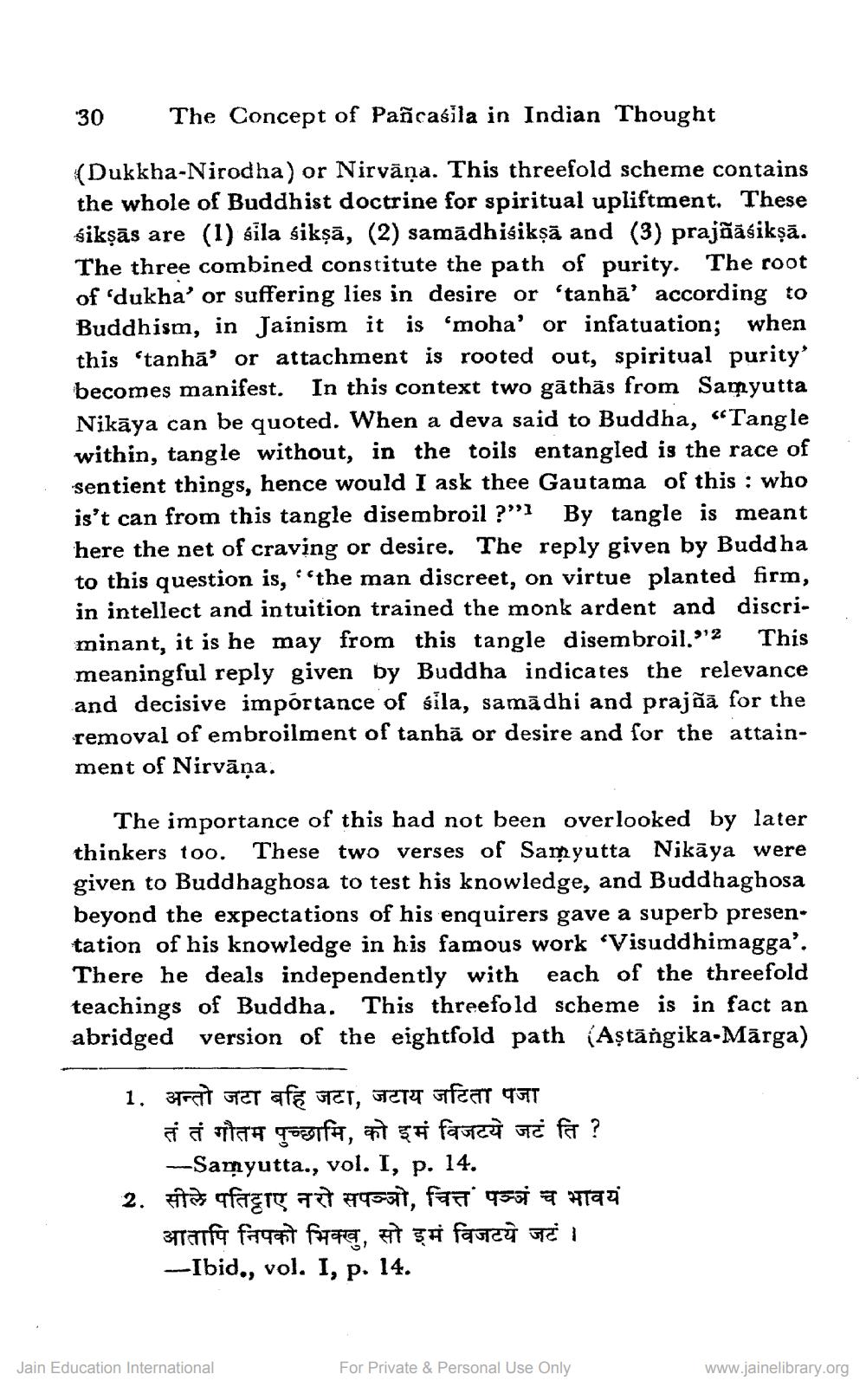________________
30
The Concept of Pañcasila in Indian Thought
(Dukkha-Nirodha) or Nirvāņa. This threefold scheme contains the whole of Buddhist doctrine for spiritual upliftment. These śikṣās are (1) sila sikṣā, (2) samādhiśikṣā and (3) prajãāśikṣā. The three combined constitute the path of purity. The root of 'dukha' or suffering lies in desire or "tanhā' according to Buddhism, in Jainism it is ‘moha' or infatuation; when this ‘tanhā' or attachment is rooted out, spiritual purity' becomes manifest. In this context two gāthâs from Samyutta Nikāya can be quoted. When a deva said to Buddha, “Tangle within, tangle without, in the toils entangled is the race of sentient things, hence would I ask thee Gautama of this : who is't can from this tangle disembroil ?”] By tangle is meant here the net of craving or desire. The reply given by Buddha to this question is, ''the man discreet, on virtue planted firm, in intellect and intuition trained the monk ardent and discriminant, it is he may from this tangle disembroil."'2 This meaningful reply given by Buddha indicates the relevance and decisive importance of sila, samadhi and prajñā for the removal of embroilment of tanhā or desire and for the attainment of Nirvāņa.
The importance of this had not been overlooked by later thinkers too. These two verses of Samyutta Nikāya were given to Buddhaghosa to test his knowledge, and Buddhaghosa beyond the expectations of his enquirers gave a superb presentation of his knowledge in his famous work «Visuddhimagga'. There he deals independently with each of the threefold teachings of Buddha. This threefold scheme is in fact an abridged version of the eightfold path (Aștāngika-Mārga)
1. अन्तो जटा बहि जटा, जटाय जटिता पजा
तं तं गौतम पुच्छामि, को इमं विजटये जटं ति ?
--Samyutta., vol. I, p. 14. 2. सीले पतिट्टाए नरो सपो, चित्त परं च भावयं
आतापि निपको भिक्खु, सो इमं विजटये जटं । -Ibid., vol. I, p. 14.
Jain Education International
For Private & Personal Use Only
www.jainelibrary.org




